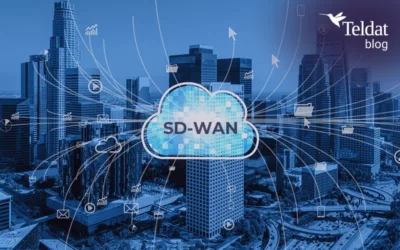 Cellular networks allow new services by making Internet access ubiquitous. Their increasing coverage, reliability and speed allow businesses and end customers alike to take advantage of new possibilities, although at the same time they increase dependence on Internet availability for everyday activities.
Cellular networks allow new services by making Internet access ubiquitous. Their increasing coverage, reliability and speed allow businesses and end customers alike to take advantage of new possibilities, although at the same time they increase dependence on Internet availability for everyday activities.
However certain areas do not receive reliable cellular coverage. A typical case is that of railway networks, which can include long stretches along uninhabited regions in which it is not cost-effective to deploy a cellular network. Even in areas with coverage, passengers’ access to cellular networks is hindered by attenuation in network signals produced by the train’s own body. Some passengers may also face high roaming tariffs to access the Internet. In addition to passengers, M2M units and the train staff could also greatly benefit from network connectivity, but they face the same challenges.
In order to access the Internet aboard a moving train, different approaches can be followed.
The first option is for the cellular network operator to deploy additional cellular capacity along the railway tracks. This solution is rarely cost effective and in any case the signal reception is still obstructed by the coachwork of the train. In addition passengers need a cellular contract with that particular operator in order to enjoy network access.
Another option is to use signal repeaters (possibly even aboard the train). However this is only feasible in areas where there is some signal available to begin with, and network capacity is seriously affected.
A better option is to establish an independent network aboard the train. M2M systems can be connected using Ethernet cabling and Wi-Fi can be deployed to reach every corner. An onboard router controls upstream connections and can combine different network access technologies (including cellular with external high gain antennas, satellite, and Wi-Fi along the tracks) to ensure failsafe and high speed connectivity. Additional routers may also be deployed to ensure higher redundancy.
Having a full network with high speed Internet connectivity aboard the train opens many new possibilities to streamline rail operations and at the same time creates customer loyalty by offering an incentive to travel by train instead of driving or taking a plane.
Among the many new services which can be deployed we can mention some related to the train operation, such as:
• Real-time central access to on-board cameras for security purposes.
• Remote monitoring and management of on-board systems.
But we should not forget services catered to the passenger:
• Internet access (free or at a cost).
• Display of information on internal screens including maps, schedules of connecting trains, and advertisements.
• Access to on-board cafeteria or restaurant for orders.
When deploying various services, the routers aboard the train must ensure that all of them operate independently and do not interfere with one another. The routers must also control that at times when there is limited bandwidth available the most critical services are catered to first. In addition it is important to secure sensitive information using strong encryption techniques, as well as to provide flexible management and failsafe operations.
Teldat has built a range of routers and access points which are especially designed and certified for the demanding environment found aboard a train. The H1 Rail routers and W2002T-n access points combine to offer endless possibilities aboard rolling stock.
In order to remain competitive in an increasing complex market, train operators need to streamline their operations and find new ways to ensure customer loyalty. Having full Internet connectivity aboard the trains is a cost-effective way to quickly improve both these areas.

























